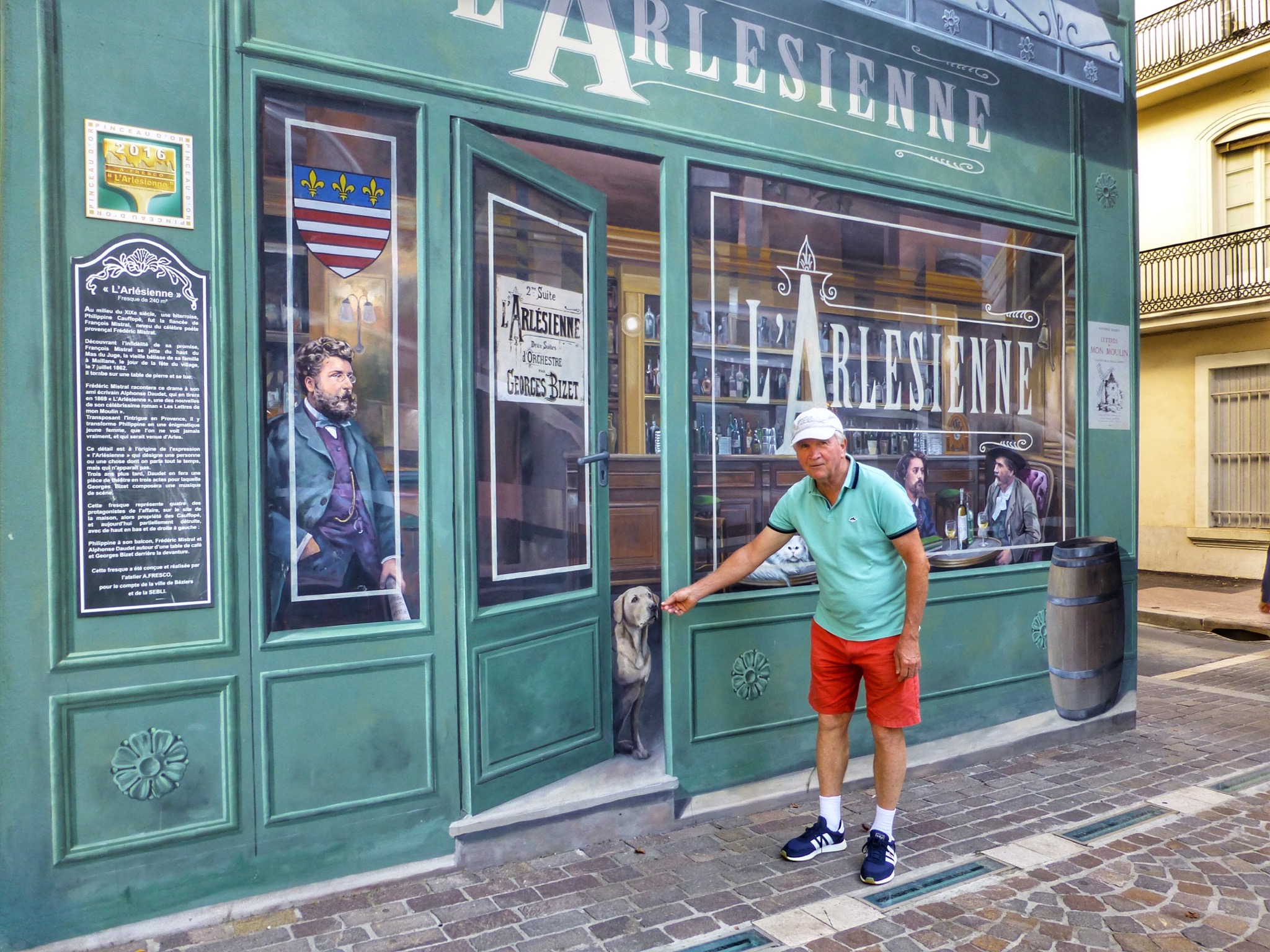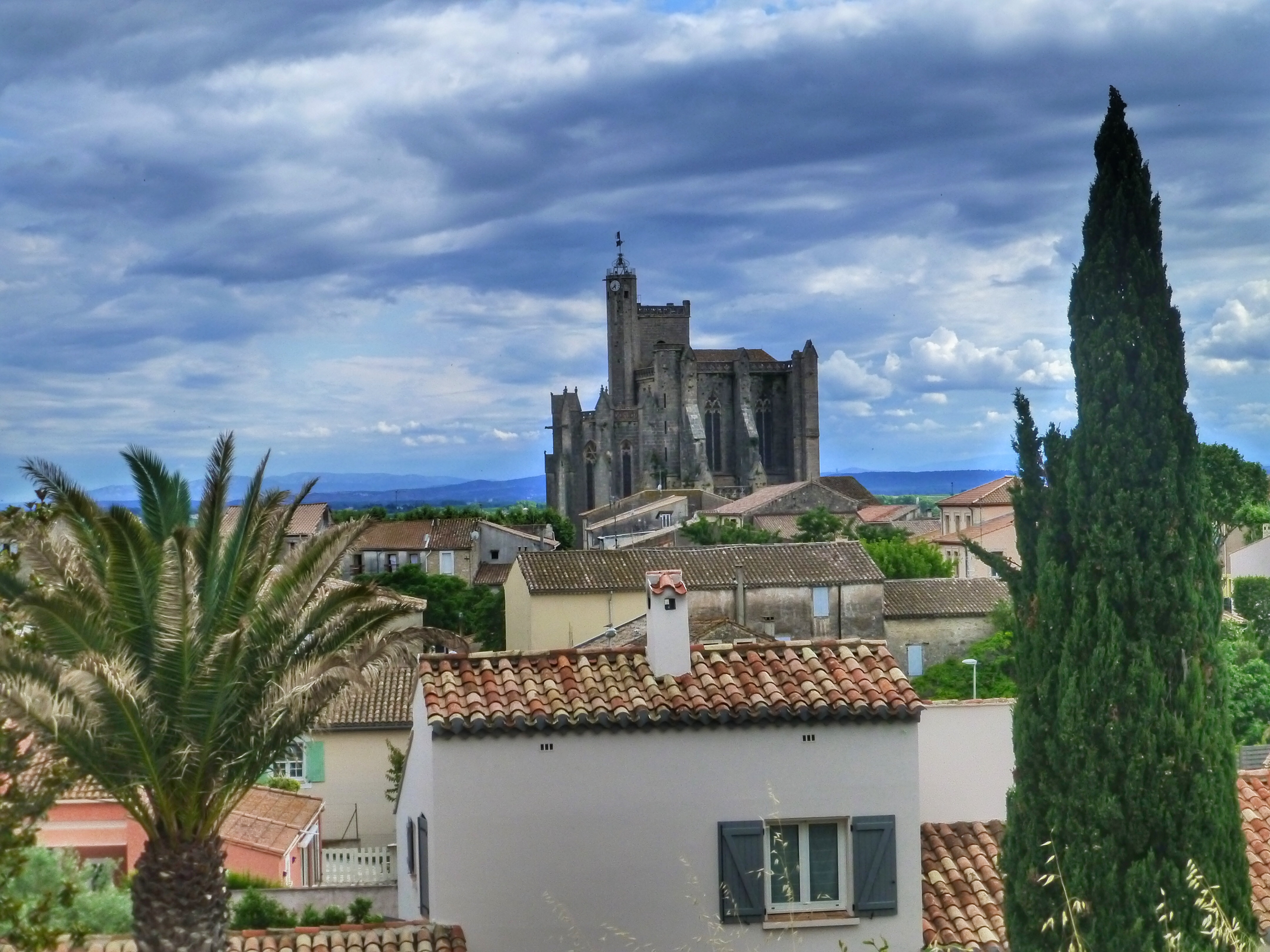Our first major town on the canal du Midi was Beziers. Another barge, MicMac, had arrived in Beziers a few days before us so had organised a mooring next to them. This was handy considering the number of hire boats around. On other canals we tended to just roll into a town/marina and generally would be able to snag a mooring spot. However, on this canal we deemed it prudent to book a berth a few days in advance. For smaller towns and villages we took our chances but in larger towns it was better to be safe than sorry.
Beziers is one of the oldest towns in France and dates back to about 500BC. It was also a stronghold for the Cathars in the 12th century before being attacked by catholic crusaders when all the population of the town (20000) was massacred and the town was pillaged and burnt. The town was rebuilt and eventually in the 18th century prospered due to the cultivation of vines.
Beziers sits on the Orb River which is crossed by the canal du Midi over the Pont Canal de l'Orb. The town is undergoing a rejuvenation programme and has some lovely areas near St Nazaire cathedral, which has a great vantage point above the Orb River.
 |
| St Nazaire Cathedral |
 |
| The Old bridge over the Orb River |
Throughout the town are a number of tromp l'oeil
 |
| Feeding the local canine |
 |
| more street art |
On leaving Beziers travelling west, you need to go through a series or staircase of locks, the
Fonserrannes Ecluses.There are only certain times of the day when you can go through these and unlike other locks everyone is either going up in their time slot or they are coming down. Normally a boat goes up and then another boat comes down and so on. These locks are a major engineering feat and, as such, are a huge tourist attraction. So, in consequence, are we as we travel up it. It is a challenging set of locks as there are few eclusiers and they refuse to take ropes so you are forced to walk the boat from one lock to the next and try to hold the boat in place while driving onto the rope. Added to that is a low bridge in the middle where you have to get back on the boat to go under the bridge and then hop off again once you are on the other side. Then there are the tourists who think nothing of getting in your way or stepping over the rope to get a good view down inside the lock.
 |
| this is the second lock where tourists aren't allowed, however the first one is open slather for the gawkers |
While in Beziers we did a recce of the bridges up ahead and also prospective mooring spots. Capestang would be our next major stop as this would be where we may need to take the wheelhouse down. Capestang bridge is considered one of the most problematic on the canal, not just because of its height but also its slightly lopsided shape. During our recce we watched a hotel barge go through and scrape on the wheelhouse.
 |
| Kevin pointing out the bump in the arch at Capestang |
 |
| Roi Soleil scrapes as she comes through |
We spent a lovely week in Capestang, luckily, under the shade of the trees. We have now heard that these trees have been chopped down as they were diseased. Unfortunately it's not just the diseased trees that are culled but a couple each side as well to reduce the risk of the fungus spreading. This means a large hole in the canopy. While we were in Capestang the tourist bureau conducted informative walks highlighting the history of the canal and the town. Originally the town was on the edge of a lake with Narbonne on the other side but over the centuries the lake has dried up.
 |
| peaceful evening in Capestang |
 |
| looking towards Narbonne and Capestang cathedral from the canal |
From Capestang we cruised to Le Somail and Homps before reaching another series of locks at Trebes and then into the lovely town of Carcassonne. At Le Somail, we arrived in town at lunch time and found a nice mooring near a restaurant. Of course we decided to take advantage of a restaurant so close. It was also the day that France defeated Australia in the rugby. The lovely staff at the restaurant were very sympathetic once they found out we were Australians. The mooring was so opportune that we decided to stay here for the night.
 |
| Restaurant and mooring spot in Le Somail |
 |
| Pizza for lunch |
 |
| pasta version of paella |
 |
| there are about 50000 books in this second hand bookshop on the side of the canal in Le Somail |
 |
| Dusk at Le Somail |
Our next stop was Homps, a major hire boat base. We arrived here in time for lunch and also managed to fill the boat up with water before heading off again. This time we decided on a wild mooring.
 |
| Another lovely bridge |
Between Le Somail and Carcassonne we negotiated a couple of staircase locks and some pretty low bridges but the lowest bridge was yet to come. The entry to the final lock before the port of Carcassonne is under Pont Marengo. This is the lowest bridge on the canal du midi and would be a test of nerve and excellent steering skills to keep us in the centre of the bridge.
 |
| we've finally gone through the lowest bridge to enter the port at Carcassonne |




















